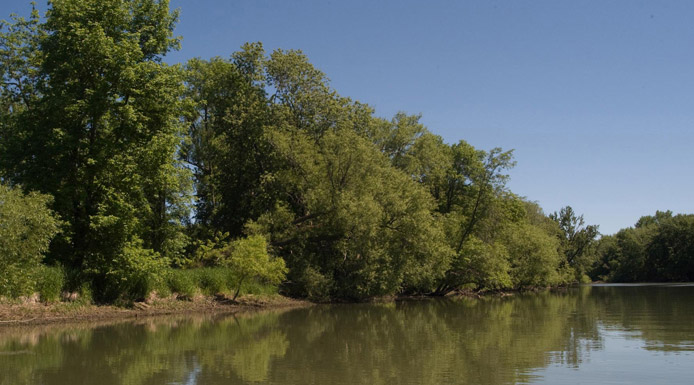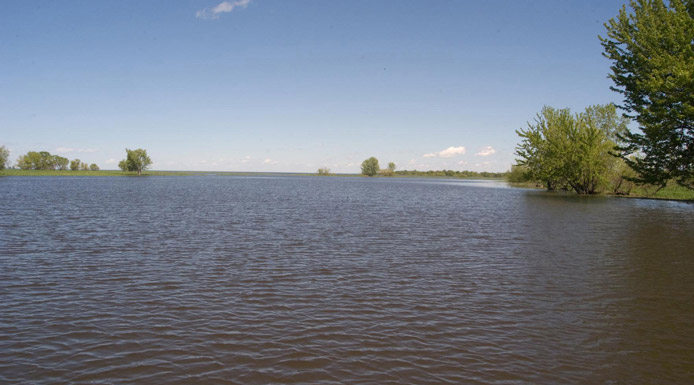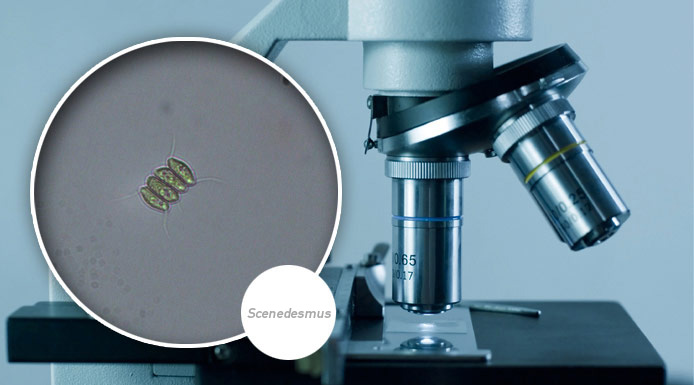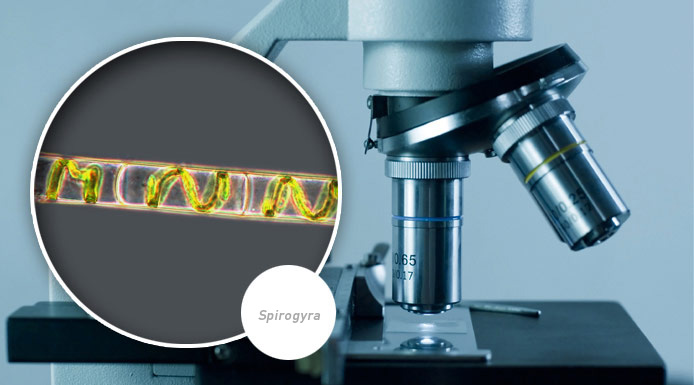WATERS OF LIFE
LIFE UNDERWATER
- VEGETATION
- PLANKTON
- PHYTOPLANKTON
- ZOOPLANKTON
- BENTHOS
- FISH
- AMPHIBIANS AND REPTILES
PLANKTON - PHYTOPLANKTON - DISTRIBUTION
![]() FLASH PLAYER IS REQUIRED TO SEE THE CONTENT OF THIS PAGE
FLASH PLAYER IS REQUIRED TO SEE THE CONTENT OF THIS PAGE
VIDEO - 0 min 5 s
Phytoplankton is passively suspended in the water column.

Algae occupy the upper layers of the water column because light, which they need to photosynthesize, is stronger there.

Because phytoplankton is usually denser than water, it tends to sink. Algae employ various strategies to remain in the more illuminated zone.

An increase in the surface area of an alga compared to its volume is one strategy that facilitates flotation.
Some types of algae are extremely small (< 0.002 mm), while others grow into filaments.

Some algae form clusters that trap bubbles of oxygen produced during photosynthesis, allowing them to float to the surface.

This photo taken through a microscope shows cells of the alga Oedogonium.

Algae equipped with flagella can move vertically through the water column. However, these flagella are not very effective when it comes to moving against a current.
